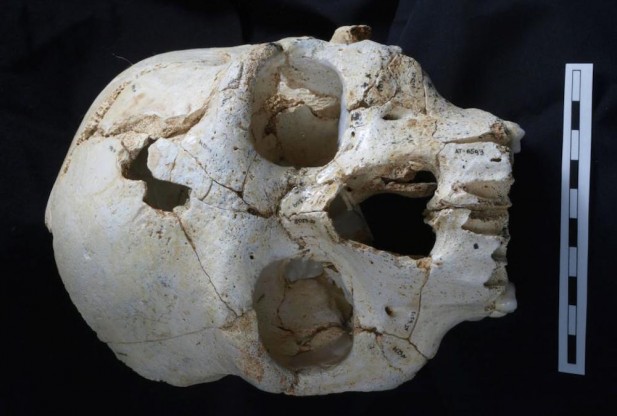
In the study, Dr. Nohemi Sala from Centro Mixto UCM-ISCIII de Evolución y Comportamiento Humanos, Spain, and her colleagues explain that the skull was discovered at Sima de los Huesos, a site located deep within a series of underground caves located in northern Spain.
The skull, known as Cranium 17, was found with the skeletal remains of at least 28 individuals dating back to the Middle Pleistocene period. The specimen is comprised of 52 cranial fragments recovered during a series of excavations at the site over the past two decades, and contains a pair of penetrating lesions on the frontal bone, just above the left eye, Dr. Sala's team said.
Injured skull discovered at possible early burial ground
By analyzing the skull using modern forensic techniques, such as contour and trajectory analysis of the traumas, the study authors discovered evidence that the fractures were produced by two separate impacts with the same objects. The impacts came at slight different trajectories around the time of death, the authors said, and are unlikely the result of an accident.
The site where they were discovered is only accessible through a 13-meter deep vertical shaft, they said in a statement, but the injuries do not appear to be consistent with a fall down the shaft. Instead, the type and location of the fractures, and the belief that they appear to have been caused by two blows with the same object.
This discovery has led the authors to conclude that the injuries came as a direct result of intentional, lethal interpersonal aggression. In other words, Dr. Sala and her colleagues explained that this individual may be the victim of "the earliest case of murder" in human history.
In addition, they noted that if this one individual was killed, his or her body was probably carried by other humans to the top for the vertical shaft, then dumped into it. Such an act would appear to indicate that it and the rest of the bodies found at the Sima de los Huesos site had been placed there intentionally, and that the site could potentially be an ancient burial ground of sorts.



Reader Comments